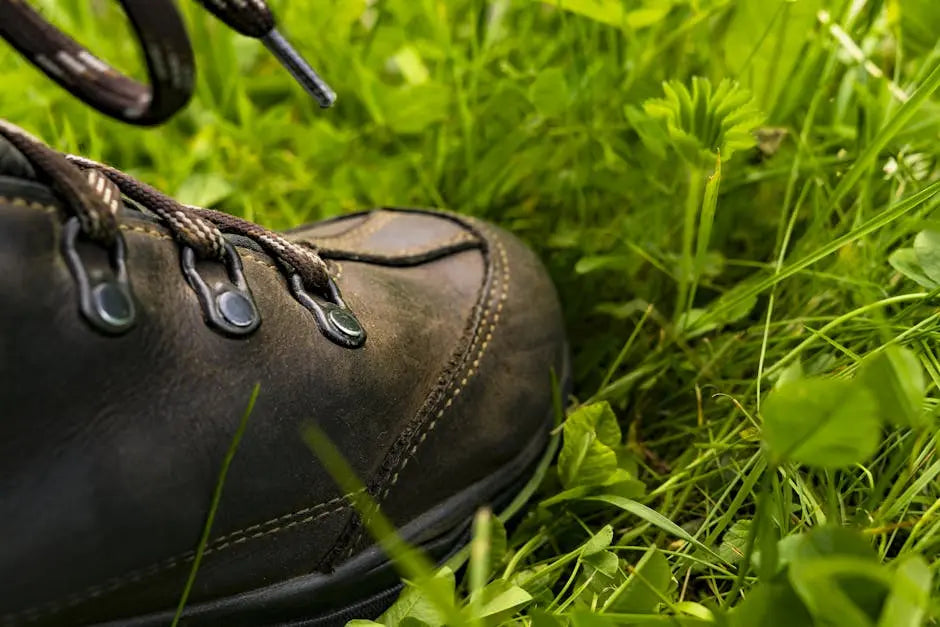
What Should I Look for in Zero Drop Hiking Shoes?
Zero drop hiking shoes have become increasingly popular among hikers for their natural feel and comfort. With an equal heel to toe height, these shoes promote a more natural stride. If you’re considering making the switch to zero drop hiking shoes, here’s what you need to look for.
Understanding Zero Drop
Zero drop shoes are characterized by having no height difference between the heel and the toe, allowing your foot to sit level on the ground. This design aims to mimic the barefoot walking experience, promoting a more natural footstrike as explored on SectionHiker, and offering potential benefits such as reduced strain on certain muscle groups and improved posture.
The concept of zero drop is not new but has gained popularity recently as more people seek footwear that supports a healthier gait. By allowing the foot to strike the ground more naturally, zero drop shoes can enhance your connection to the earth and encourage a posture that aligns with your body’s natural mechanics.
Importance of Fit and Comfort
Fit is crucial when selecting zero drop hiking shoes because these shoes should feel like a natural extension of your foot. Look for a wide toe box that lets your toes spread out comfortably, enhancing balance and reducing the risk of blisters and black toenails. This wide design helps maintain comfort on long hikes.
A good fit means plenty of room for your toes while ensuring that your heel sits snugly in place without slipping, which is vital for reducing fatigue during prolonged hikes. Your zero drop shoes should feel comfortable right from the start, without requiring a long break-in period.
Comfort is amplified by selecting shoes with breathable materials that keep your feet cool and dry, which is especially important for maintaining comfort on hot days.
Material and Durability
The materials used in zero drop hiking shoes play a crucial role in their durability and performance. Most high-quality shoes are built with synthetic materials that provide a balance of breathability, moisture resistance, and light weight.
Durable options often include reinforced toe caps and abrasion-resistant panels to withstand rugged terrains. When choosing your shoes, consider the environments you plan to explore because material choice can significantly impact their lifespan and functionality.
Furthermore, seamless construction can prevent weak points where wear and tear typically occur, ensuring long-lasting use even in challenging conditions.
Sole and Traction
The sole design greatly influences the traction and stability of zero drop hiking shoes. A well-designed sole with a good tread pattern can provide exceptional grip across various surfaces, from rocky trails to slippery streams.
Consider shoes with soles crafted from durable rubber compounds that offer both flexibility and resilience as highlighted in discussions about zero-drop hiking shoes. This will support better footing and reduce the risk of slips and falls.
Some shoes also incorporate specialized compounds that enhance grip on wet terrains, ensuring safety and confidence during unpredictable weather conditions.
Arch Support and Foot Health
Zero drop shoes can cater to a variety of foot types, offering a balance between support and flexibility. While these shoes don’t generally offer significant arch support, they encourage natural foot movement, which can lead to improved muscle strength over time.
Those with flat feet or specific arch-related concerns should consider trying zero drop shoes gradually, as it might take time for your feet and legs to adapt to the different mechanics. Some hikers complement their zero drop shoes with flexible insoles for added support during their transition.
It’s recommended to consult with a podiatrist if you have ongoing foot issues to determine if additional support is necessary and to select a shoe that aligns with your specific needs.
Wrapping Up Your Zero Drop Hiking Shoe Search
Choosing the right zero drop hiking shoes involves considering fit, comfort, materials, sole design, and support. By paying attention to these key aspects, you can find a pair that will enhance your hiking experience and keep your feet happy on the trails.
- Choosing a selection results in a full page refresh.
!






















































